#borneo island
Text
Dirk Hooijer's Legacy in Borneo's Prehistoric Fauna
Discovering Niah Cave's 45,000-year-old primate fossils, revealing Borneo's rich prehistoric fauna through Hooijer's work.
via Dayak Daily, 05 February 2024: Exploring Niah National Park’s rich primate heritage, this article sheds light on the discovery of prehistoric gibbon and monkey remains by Dutch palaeontologist Dirk Albert Hooijer. His pioneering work, dating back 45,000 years, provides invaluable insights into the diverse fauna of Borneo’s past, highlighting Niah Cave’s significance in understanding Southeast…
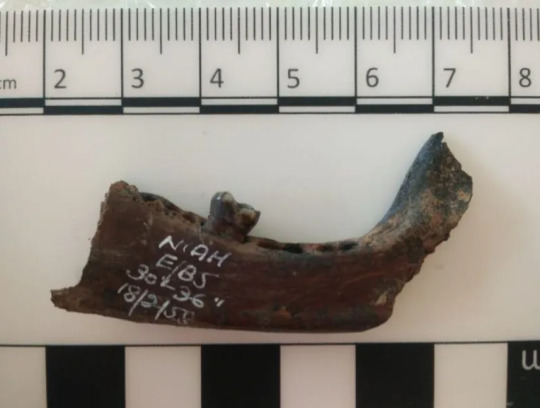
View On WordPress
2 notes
·
View notes
Photo
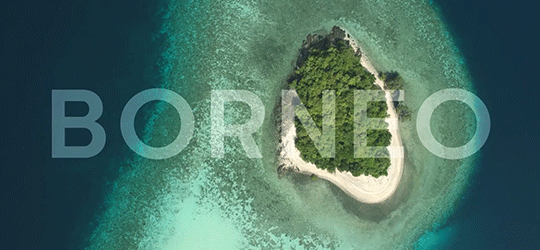


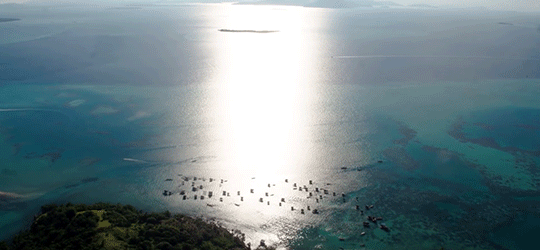
Islands from the Sky
Madagascar | Borneo | Hawaii
35 notes
·
View notes
Text
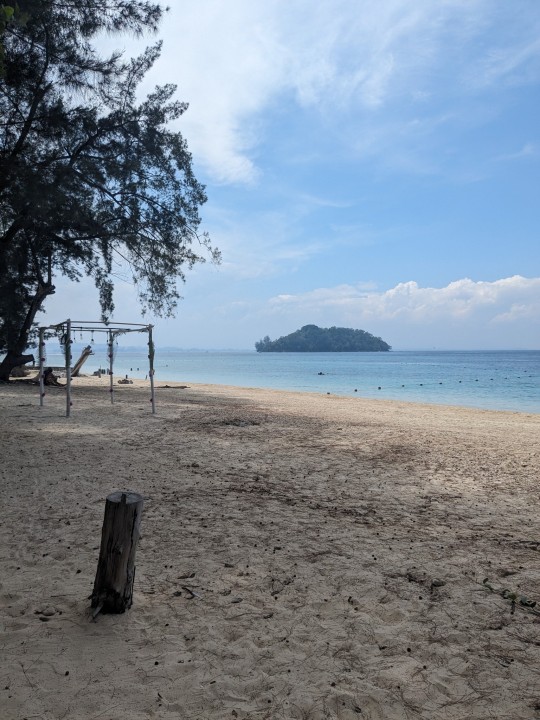


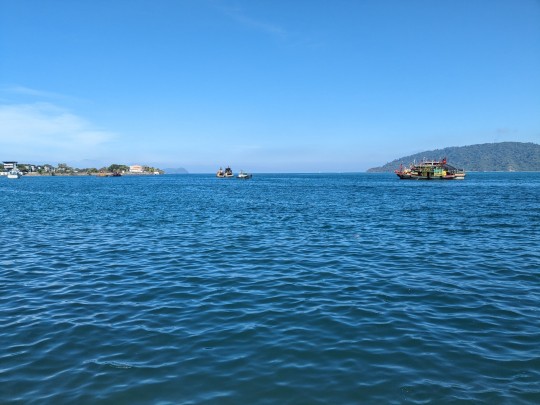
Kota Kinabalu, Malaysia
#sabah#borneo#island#vacation#travel#Malaysia#snorkeling#beach#i got so sunburned you guys#so itchy#everything here is so cheap#we had a really good chicken and rice meal with drinks for less than $5 for both of us#and it was delicious
1 note
·
View note
Video
youtube
Immerse yourself in the vibrant tapestry of this archipelago, where tropical wonders await at every turn. From the cultural richness of Bali to the pristine beaches of Komodo Island, each destination promises a unique and enchanting experience. Discover the ancient temples of Borobudur, nestled in the heart of Java, and lose yourself in the lush jungles of Borneo, where exotic wildlife thrives. Indonesia's diversity unfolds as you traverse the terraced landscapes of Ubud and dive into the crystal-clear waters surrounding Raja Ampat. For more visit here
#youtube#bali adventures#bali cultural sites#bali tourist spots#borneo ecotourism#borneo jungles#borneo wildlife#borobudur temples#tropical adventures#tanah lot temple#komodan island#yogyakarta#gili islands#travelvlog#bali#indonesia#bali travel guide#indonesia travel guide#hidden place indonesia#tropicaltravel#indonesia travel film#indonesia travel#indonesia's hidden gems#5 Secret Paradises#unveiling indonesia's#jakarta#baliindonesia#balitravel
1 note
·
View note
Text
Bookish Travels---July 2023 Destinations
I saw this meme on It’s All About Books and thought, I like this!! So, I decided to do it once a month also. Many thanks to Yvonne for initially posting this!!
This post is what it says: Places I travel to in books each month. Books are lovely and take you to places you would never get to. That includes places of fantasy too!!
Bon Voyage!!
Please let me know if you have read these books or…

View On WordPress
#A Thousand Splendid Suns#A.R. Shaw#Aegean Islands#Afghanistan#Ann Hunter#Anna Gomez#Anxious People#Ariadne#Asam#Athens#Baghdad#Beaufort#Berkley Street#Blind Fear#Bookish Travels#Bora Bora#Boracay#Borneo#Boston#Brandon Webb#Brant#C.A. Gray#California#Cannon Beach#Cape Cod#Carly Brown#Charleston#Chelmsford#Chelsea#Chicago
0 notes
Text
A juvenile suspect is in custody after a shooting leaves 5 dead, at least 2 wounded in Raleigh, North Carolina, police say | CNN
A juvenile suspect is in custody after a shooting leaves 5 dead, at least 2 wounded in Raleigh, North Carolina, police say | CNN
CNN
—
A 15-year-old suspect is in custody after five people were killed and at least two others wounded in a mass shooting Thursday in Raleigh that North Carolina’s governor called a “moment of unspeakable agony.”
A handgun and long gun were recovered after the shooting, during which the suspect wore camouflage and carried a camouflage backpack, according to a source with knowledge of the…
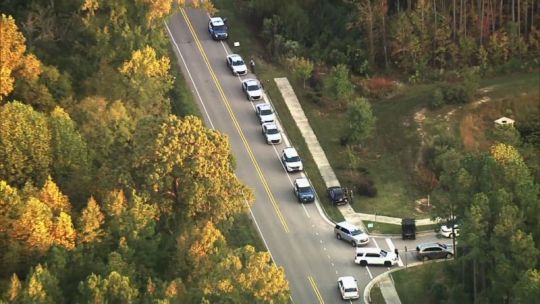
View On WordPress
#asia#continents and regions#crime#Crimes against persons#Criminal offenses#death and dying#deaths and fatalities#homicide#island of borneo#Law enforcement#law enforcement and corrections#mass murder#Murder#North America#North Carolina#Policing and police forces#political figures - us#press conferences#Raleigh#roy cooper#Shootings#societal issues#Society#southeast asia#Southeastern United States#the americas#United States#Violence in society
0 notes
Photo

One of the unique dishes comes from South Borneo, known as 𝙇𝙖𝙠𝙨𝙖 Banjar. 𝙇𝙖𝙠𝙨𝙖 dough made from rice flour with a soft chewy texture is shaped in such a way that it resembles a flat round plait, doused with a savory sauce made from coconut milk, spices and snakehead fish meat which is finely ground so that it blends with the sauce . 𝙐𝙣𝙘𝙤𝙫𝙚𝙧 𝙩𝙝𝙚 𝙤𝙩𝙝𝙚𝙧 𝙨𝙞𝙙𝙚𝙨 𝙤𝙛 𝘽𝙤𝙧𝙣𝙚𝙤 𝙄𝙨𝙡𝙖𝙣𝙙 ⭐Gaess..Kita kenalkan yuk Pesona Keindahan Alam, Tradisi dan budaya BANUA ke dunia luar. ⭐Follow, Comment, Like @borneou.official, dan Tag foto atau video kamu ke @borneou.official, sertakan keterangan mengenai foto atau video tersebut. Dan mimin akan repots di @borneou.official #borneo #kalimantan #traveller #island #traveling #adventure #explorer #traveller #island #traveling #adventure #explorer #pesonakalimantan #southborneo #culture #history #creativity #banjarmasin #banjarinfo #photoshoot #traveldiaries #lifestyle #travelgram #instatravelling #travelphotography #tourist #holiday #history #culture #exploremore (at Borneo Kalimantan Indonesia) https://www.instagram.com/p/CgvkNylpA4s/?igshid=NGJjMDIxMWI=
#borneo#kalimantan#traveller#island#traveling#adventure#explorer#pesonakalimantan#southborneo#culture#history#creativity#banjarmasin#banjarinfo#photoshoot#traveldiaries#lifestyle#travelgram#instatravelling#travelphotography#tourist#holiday#exploremore
0 notes
Text
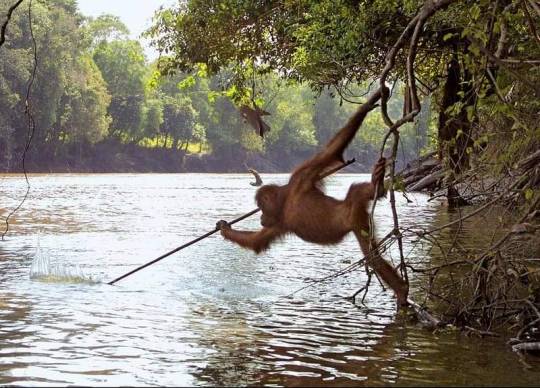
A male orangutan in Borneo on the island of Kaja, clinging to overhanging branches, trying to spear a passing fish
More details/photos: https://bit.ly/3SGEaTH
[📸 Gerd Schuster]
145 notes
·
View notes
Text
A Sumatran rhino has been born in western Indonesia, officials said Monday, a rare sanctuary birth for the critically endangered animal with only several dozen believed to be left in the world.
The World Wide Fund for Nature (WWF) and the International Union for Conservation of Nature (IUCN) estimate the population of Sumatran rhinos to number less than 80 on the Indonesian islands of Sumatra and Borneo.
A female rhino named Delilah gave birth to a yet-to-be-named male calf weighing 25 kilograms (55 pounds) at Way Kambas National Park in Sumatra over the weekend, fathered by a rhino called Harapan.
It was the fifth calf born under a semi-wild breeding program at the park, Indonesian Environment and Forestry Minister Siti Nurbaya Bakar said in a statement.
The new addition to the Sumatran rhino herd at Way Kambas, which numbers 10, comes after another baby Sumatran rhino was born there in September.
Continue Reading.
219 notes
·
View notes
Text
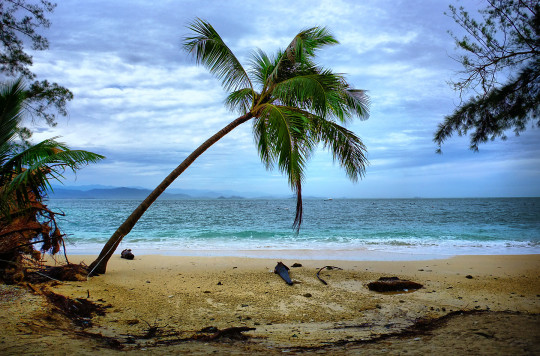
A palm tree on the beach on Manukan Island off of Borneo in Malaysia.
77 notes
·
View notes
Text

Tufted Ground Squirrel (Rheithrosciurus macrotis)
Habitat & Distribution
Resides only in lowland tropical forests; occasionally ventures into orchards
Found on the island of Borneo
Physical Description
Weight: 1–2 kg (2.2–4.4 lb)
Length: 63.4–69.4 cm (25–27.4 in)
Tufted grown squirrels are generally brown with reddish tints; they have a white stripe running down the sides of their bodies, and long tufts on their ears
The tail is extraordinarily large and fluffy, and adults have long, grooved inscisors
Behaviour
The tufted ground squirrel forages both on the ground and in trees; its diet include nuts, seeds, and fruit
Potential predators include mustelids, birds of prey, and clouded leopards
Key Advantages
The tufted ground squirrel's large inscisors are mainly used for cracking hard nuts, but have often been rumoured to be used to hunt deer
Its large tail is thought to disorient potential predators
See where they stand in the May Mammal Madness Tournament here!
Photo by James Armstrong
62 notes
·
View notes
Text
Unveiling the Crocodile's Role in Borneo's Native Cultures
Dr. Ipoi Datan explores the connection between crocodiles and Borneo's indigenous cultures, highlighting myths and traditions at Borneo Cultures Museum.
via the Borneo Post, 19 February 2024: Coverage of Dr. Ipoi Datan’s talk at the Borneo Cultures Museum, which delved into the intricate relationship between saltwater crocodiles and the cultural fabric of Borneo’s indigenous communities. The session illuminated the diverse perceptions of crocodiles among various ethnic groups, including the Iban, Lun Bawang, and Malay, revealing the reptile’s…
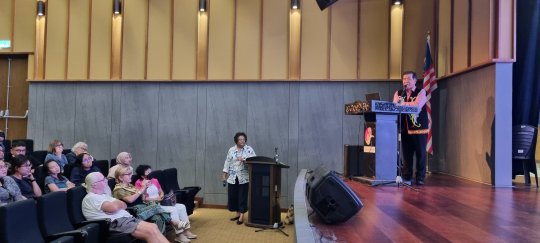
View On WordPress
#Borneo (island)#Borneo Cultures Museum#crocodile#indigenous peoples#mythology and folklore#talks / presentations
0 notes
Text
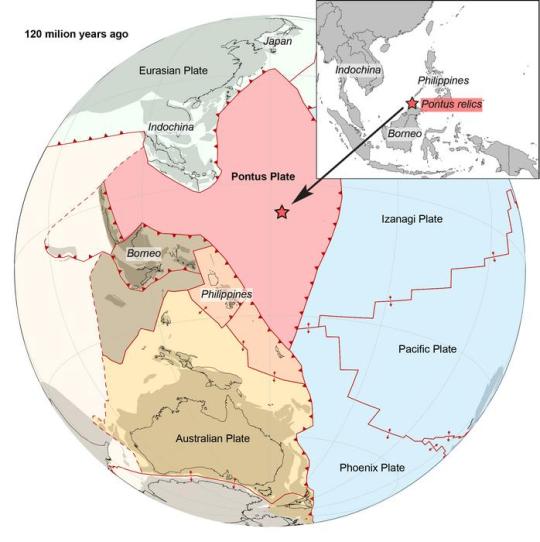
Plate tectonic surprise: Utrecht geologist unexpectedly finds remnants of a lost mega-plate
Utrecht University geologist Suzanna van de Lagemaat has reconstructed a massive and previously unknown tectonic plate that was once one-quarter the size of the Pacific Ocean. Her colleagues in Utrecht had predicted its existence over 10 years ago based on fragments of old tectonic plates found deep in the Earth’s mantle. Van de Lagemaat reconstructed lost plates through field research and detailed investigations of the mountain belts of Japan, Borneo, the Philippines, New Guinea, and New Zealand. To her surprise, she found that oceanic remnants on northern Borneo must have belonged to the long-suspected plate, which scientists have named Pontus. She has now reconstructed the entire plate in its full glory. Suzanna van de Lagemaat will defend her dissertation on this plate tectonics puzzle at Utrecht University on Friday, October 13.
Understanding the movements of the tectonic plates that make up the earth’s rigid outer shell is essential to understand the planet’s geological history. The movements of these plates strongly influenced how the planet’s paleogeography and climate have changed over time, and even where to find rare metals. But large oceanic plates from the geological past have since disappeared into the earth’s mantle by means of subduction. They have left behind only fragments of rock hidden in mountain belts. Van de Lagemaat studied the planet’s most complicated plate tectonic region: the area around the Philippines. “The Philippines is located at a complex junction of different plate systems. The region almost entirely consists of oceanic crust, but some pieces are raised above sea level, and show rocks of very different ages.”
Reconstruction
Using geological data, Van de Lagemaat first reconstructed the movements of the current plates in the region between Japan and New Zealand. That revealed how large the area was of plates that must have disappeared in the current western Pacific region. “We also conducted field work on northern Borneo, where we found the most important piece of the puzzle. We thought we were dealing with relicts of a lost plate that we already knew about. But our magnetic lab research on those rocks indicated that our finds were originally from much farther north, and had to be remnants of a different, previously unknown plate.” But the important realisation was yet to come. “11 years ago, we thought that the remnants of Pontus might lie in northern Japan, but we’d since refuted that theory”, explains Douwe van Hinsbergen, Van de Lagemaat’s PhD supervisor. “It was only after Suzanna had systematically reconstructed half of the ‘Ring of Fire’ mountain belts from Japan, through New Guinea, to New Zealand that the proposed Pontus plate revealed itself, and it included the rocks we studied on Borneo.”
Relics
The relics of Pontus are not only located on northern Borneo, but also on Palawan, an island in the Western Philippines, and in the South China Sea. Van de Lagemaat’s research also showed that a single coherent plate tectonic system stretched from southern Japan to New Zealand, and it must have existed for at least 150 million years. That is also a new discovery in the field.
Waves
The previous predictions of the existence of Pontus were made possible because a subducted plate leaves behind traces when it ‘sinks’ into the earth’s mantle: zones in the mantle with anomalous temperatures or compositions. These anomalies can be observed when seismographs pick up signals from earthquakes. Earthquakes send waves through Earth’s interior, and when they travel through an anomaly, such as a fragment from an old plate, the anomaly produces a disruption of the signal. Geologists can trace these disruptions to the existence of phenomena in the mantle, such as fragments of tectonic plates. That allows them to look 300 million years into the past; older plate fragments have ‘dissolved’ at the boundary between the mantle and the core. The study from 11 years ago showed that a large subduction zone must have run through the western paleo-Pacific Ocean, which separated the known Pacific plates in the east from the hypothetical Pontus plate in the west. This hypothesis has now been independently demonstrated by Van de Lagemaat’s research.
IMAGE....The Pontus oceanic plate that was reconstructed by Suzanna van de Lagemaat: its location in the paleo-Pacific ocean 120 million years ago, and its present relicts. An earlier study showed that a large subduction zone must have run through the western paleo-Pacific Ocean, which separated the known Pacific plates in the east from a hypothetical Pontus plate in the west. This hypothesis has now been independently demonstrated by Van de Lagemaat’s research. CREDIT Suzanna van de Lagemaat, Utrecht University
95 notes
·
View notes
Text

In door no.4 we go on a journey of discovery and see what surprises the Nao Victoria has for us...
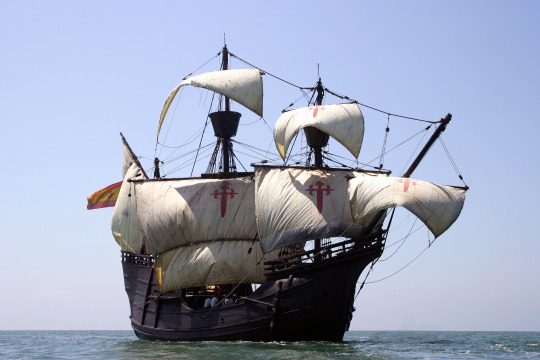
Nao Victoria
More about her here:
The Victoria was one of five ships in Ferdinand Magellan's Armada, which set sail on behalf of the Spanish crown in 1519 to find a western sea route to the Moluccas. In 1522, the Victoria was the only ship in the Armada to return to Spain from East Asia on its way through the Indian Ocean and around the Cape of Good Hope, thus completing the first historically documented circumnavigation of the globe.
She was originally named Santa María and belonged to a shipping family from the Basque harbour town of Ondarroa. In September 1518, the Spanish government had the ship, which was moored in the harbour of Cádiz and already loaded for a voyage to London, confiscated for Magellan's Moluccan expedition and compensated the previous owners with 800 ducats. A contract about the expropriation is preserved in the archives of the notaries of Seville. In it, one of the previous owners, a certain Pedro de Arismendi, declares that the ship was taken from him against his will and that the sum paid in compensation was too low. After the expropriation, the ship was renamed Santa María de la Victoria in honour of an image of a saint that was venerated in the convent of the same name of the Pauline Order in Triana and which is now in the Carmelite convent of Santa Ana, also in Triana. Since its renaming, the ship is usually referred to by its short form Vitoria or Victoria.
On 20 September 1519, the squadron sailed from Sanlúcar de Barrameda in Spain. Luis de Mendoza was the captain of the Victoria. Mendoza was killed in a mutiny in Puerto San Julián on 1 April 1520. After Magellan's violent death on 27 April 1521 on the Philippine island of Mactán, the former profos of the Armada, Gonzálo Gómez de Espinosa, initially took command of the Victoria. At the northern tip of Borneo, command was transferred to the boatswain Juan Sebastián Elcano, who held it until the return to Spain. Shortly before the end of the voyage, the Portuguese captured part of the crew on Santiago (Cape Verde). Hunger and scurvy decimated the crew, the ship was in a wretched condition and had to be bilged around the clock in the end. On 6 September 1522, the Victoria reached Sanlúcar de Barrameda, its port of departure at the mouth of the Guadalquivir. Of the original 237 members of the expedition, only 18 Europeans and four Asians reached their home port. The first circumnavigation was complete. It had taken two years, 11 months and two weeks and brought home 25 tonnes of spices. Contrary to what is often claimed, the proceeds from their sale were not enough to cover the costs of the endeavour.
After her return from the Moluccas, the Victoria was auctioned off to the highest bidder in Seville in February 1523. The winning bid was placed by a merchant from Genoa, who had the ship refloated and fitted out for an Atlantic crossing to Santo Domingo in 1525. From then on, she sailed for almost fifty years before she was lost with all hands around 1570 on the voyage from the Antilles to Seville.
#naval history#tall ship#nao victoria#spanish#16th century#age of discovery#age of sail#advent calendar#day 4
74 notes
·
View notes
Note
are boa constrictors and borneo pythons the same snakes? if not, how come they are so similar?
They're in different families, and they're not super similar! Their markings are similar at first glance, but there are lots of differences.
Boa constrictors are members of the boa family (that basically means they've got some different skull bones than pythons and they're like a step over in the family tree). They're native to a wide range of Central and South America, and they famously get to be pretty big (like 6-9 feet on average). They're not slender snakes, but they have a pretty boxy frame. They're generally amazing pets thanks to their typically docile and calm temperament, with the biggest challenge being preparing for such a large snake.
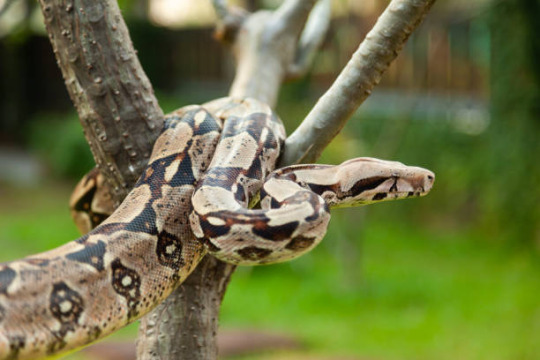
Borneo pythons, on the other hand, are members of the python family and are native to the island of Borneo, and are one of three species of short-tailed pythons. They're not huge snakes (they average around 4-5 feet long), but they are very heavy-bodied. They're highly specialized ambush predators, and their body language is a bit different for most other snakes because of that. They can make amazing pets for advanced-level keepers, but they're tricky to care for if you're not experienced and can be difficult for new keepers to read.

106 notes
·
View notes
Text
A writer’s guide to forests: from the poles to the tropics, part 8
We’ve made it to the tropics. I hope you enjoyed this, and found it useful in your writing.
Tropical rainforest
Probably the most recognizable of forest environment, and among the most threatened.
Location-Latin America, Africa, Australia, Indonesia, and the Pacific islands in between the tropics of Cancer and Capricorn. Many forests have been felled or heavily altered by human activity.
Climate-Subtropical to tropical, with conditions being wet year round. Rain does not fall all the time, with a defined rainy and dry season. (What’s the difference? Rainy season has rain almost daily while in the dry season you will have to make do with high humidity and morning fog) At higher elevations, nights are cooler, though still well above freezing, and mist and rain are more common(this is why mountainous RF are called cloud forests)
Plant life- This is a tree dominated environment. The understory and forest floor are dark, unless trees have recently fallen. Many small plants are arboreal, nestled in the upper branches of trees. Vines and other climbers use larger plants as scaffolding. In areas of poor soil, tropical pitcher plants (Nepenthes spp.) and bladderworts (Utricularia spp.) get much needed nutrients from animal sources.
Animal life- Rainforests are the most biodiverse environments on Earth. Insects are everywhere, as are the animals that eat them. Birds and primates can be found from the canopy to the forest floor. The moist conditions make for an ideal habitat for frogs and toads. Apex predators are the big cats-think jaguars, tigers and leopards. Some species of herbivores can be quite large; Africa is home to gorillas and forest elephants, while the island of Borneo, Sumatra, and Java support rhinos and orangutans (though the further of these species is uncertain)Waterways are home to all sorts of fish(there are more species in the Amazon river than in the Atlantic Ocean), and larger animals, such as otters, crocodilians, and even river dolphins. Isolated islands have far fewer mammal species, with bats being the only ones, but hardy insects, reptiles, and birds making up the majority of the biomass. Deforestation and the introduction of invasive species have caused the extinction of many animal species, with island forests being the hardest hit.
How the forest affects the story- When one thinks of societies in the tropics, it usually is through the lens of western stereotypes designed to shock audiences and give ‘civilization’ something to conquer. Avoid this at all cost! There is more to the forest. Before the Spanish conquest, the Amazon was home to cities, and the agricultural societies of New Guinea are believed to be contemporaries with the farmers of Mesopotamia.
Grain does not do well in the tropics, so farming will be based around plants such as açaí, coconuts, taro, breadfruit, bananas, and manioc. These can be supplemented by hunting and fishing, but long term storage will have to be addressed. High humidity is a breeding ground for bacteria and fungi, so organic material will have to be kept dry so they don’t rot. The concentration of microorganisms also means that good hygiene is needed to avoid disease.
Settlement will always cause disruption, and the extent of your character’s activities can have a big impact on the forest, and your story. And remember, the activity of a small village will be different to that of large scale logging. Management, use, and abuse of the rainforest can be a driving factor in the plot. How will your characters react? Is the threat from outside or from within? The destruction of the rainforest is one of the main factors, along with unmitigated greenhouse gas emissions that is causing the current climate crisis. Can your characters do better? Or will you create a cautionary tale that shows us the grim future we are currently barreling towards? (That choice, my dear writers, is completely up to you)
#writing#creative writing#writing guide#writing inspiration#writing prompts#writer#writers#writer on tumblr#writeblr
33 notes
·
View notes